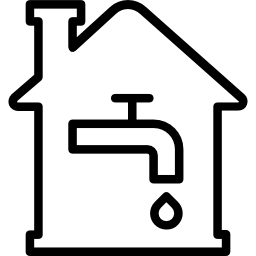

What is service charge and how to reduce it?
What is service charge and how it differs from ground rent
These are the fees that you have to pay every year to cover the running of the communal services in your block of flats. Most buildings – even small blocks, with only 1-2 flats would normally require some service charges to be paid.

The communal and shared services can involve the day-to-day maintenance needs, for example: heating, lighting, panting, plumbing etc.. Otherwise these may cover larger, one-off projects, for example, fixing the roof or servicing the lifts.
Typically these charges will be collected on a quarterly basis and each flat owner will usually be charged a variable amount based on the size of their flat. Therefore, if you own the biggest flat in a building you can normally expect to pay the most.
In addition, because the fees are not fixed, they are technically an unlimited liability on the property. The total spend is decided by the board or landlord controlling your building therefore, you may have little power to control this.
Ground Rent differs as this is a yearly fixed payment to the landlord or freeholder of the building. This value will be stipulated clearly in your lease as well as the rights of the landlord to increase this year on year. However, for this reason, this charge is limited.
The typical costs – what are the major expenses?
Different buildings will have different costs. For example, with older buildings, one-off repairs can represent a large percentage of the total costs, whilst newer buildings are lower maintenance. This can be seen in a similar way, to the differing costs between running a newer and older house.
Some example of these costs can be seen below
One-off refurbishments and works:
For example: fixing the roof, changing the boilers, servicing the lifts.

Buildings insurance:
The communal insurance policy protecting against things like fire, terrorism and leaks.

Monthly or quarterly inspections:
The time taken for block management staff to review your block's communal areas.

People and staff:
The caretaking staff in the building and the office staff managing the building.

Energy and other utilities:
The heating, electrical, water and telephone costs for the building.

Cleaning and general maintenance:
For example: regular cleaning of the communal spaces or maintaining a garden.

Financial management and regulation:
For example: filing the building’s accounts, arranging building insurance and fire inspections.

Management fees:
The administration charges to run the building and arrange any works needed.

The problems with being inactive

Poor transparency is the big reasons that costs tend to spiral. Details of costs are hard to come by and even where available, they are not looked at.
How this can lead to poor management is explained below:
- No one knows what leaseholders want – for example, either more services or lower service charges - which means spending is often inefficient
- The best services for your buildings are not always found as no one individual is pushing to seek the best suppliers or negotiate the best prices
- Bad decisions keep on affecting the building for years as supplier contracts and services are never reviewed
Where and how savings can be made
Often the levels of costs reflect the needs of the building or the level of service that the flat owners require. For example, older buildings will tend to cost more to run and blocks with higher levels of communal services (for example, lifts, a full time porter or a maintained garden), will naturally require more money.
However, some of the common ways we have found to save money are listed below.
General cost reviews
Old contracts and services can often be agreed to without being reviewed. For example, maintenance contracts or utility contracts - by reviewing each supplier and ensuring the charges are still relevant you can ensure the fees are spent correctly.
Capital projects
Reductions in the yearly service charge can be made by making improvements to the building, for example, to improve the energy efficiency or reduce the staff costs. Common examples of this are to improve the heating systems to reduce yearly fuel costs or to include leak detection systems to reduce the insurance costs.
Further information on how reducing your service charge will affect your flat price can be seen here.
Insurance
Often blocks can over-insure themselves - ie paying to cover risks which do not have to be insured against at all or at least does not have to be paid through the communal charge. By sourcing an independent broker and completing a full review of your lease you can ensure the premiums and minimised.
Staff
Like many organisations, staff costs can be the highest for a building - particularly for larger buildings with caretaker staff. By understanding the exact levels of service needed for the leaseholders and residents you can check if you are paying too much (or indeed too little) for these people.
Arrears
It is very common in residential buildings for at least 1 or 2 of the leaseholders to be behind on their service charge payments. This effectively increases costs for all other leaseholders due to cash-flow issues. By ensuring good legal and debt collection processes are in place, this can be minimised.
One-off costs
Large major works projects can often be the biggest single expense that a building will have to face. By bringing in the right expertise, the projects can be managed better to reduce over-runs and costs. Also, by following a clear Section 20 process before money is spent, you can ensure that the value of the projects are judged correctly and the effort and costs are minimised.
Management processes
Ensuring that the building's processes run well can often help save money in the long-run. For example, a proper tenant licensing system can ensure that disruptive renters do not enter the building - this can lead to lower long terms costs for example around maintenance and cleaning.
Utilities
Like individual homes, it is a good idea to switch your energy providers regularly. In addition, it can be a good idea to find the right energy brokers who are transparant about their costs and commissions. This will allow you to find the best deals on a year-to-year basis.
How near-future changes will reduce service charge further
Regulation:
The government is looking at ways to improve the industry based on wide-spread customer dissatisfaction. These measures will likely be around encouraging more transparency in the industry and setting out minimum standards for specific services.

Technology:
Automation of labour intensive jobs will have an effect on this industry –reducing costs and improving services. This is both around the leaseholder and managing agent dealings (e.g., communications, inspections and reporting) and internally within the managing agent businesses (e.g, accounting, contractor management and planning).

Changing property prices:
As flat price increases are no longer guaranteed there will be an increased pressure on reducing property costs. This will encourage leaseholder to generally reduce costs and be more active in the management of their buildings.

Register to get a review of your service charge, compare yours to other buildings and see available discounts from suppliers.
Register to make a start
GET A FREE REVIEW OF YOUR BUILDING'S SERVICE CHARGE.
We work with dozens of managing agents who manage hundreds of buildings, allowing us to:

|
Show you where you are spending more or less than similar buildings |

|
Provide suggestions on how to reduce the charges or spend them better |

|
List out what the best-run buildings invest in |

